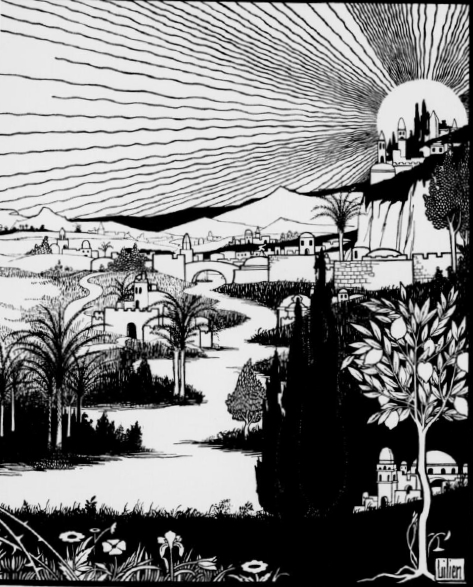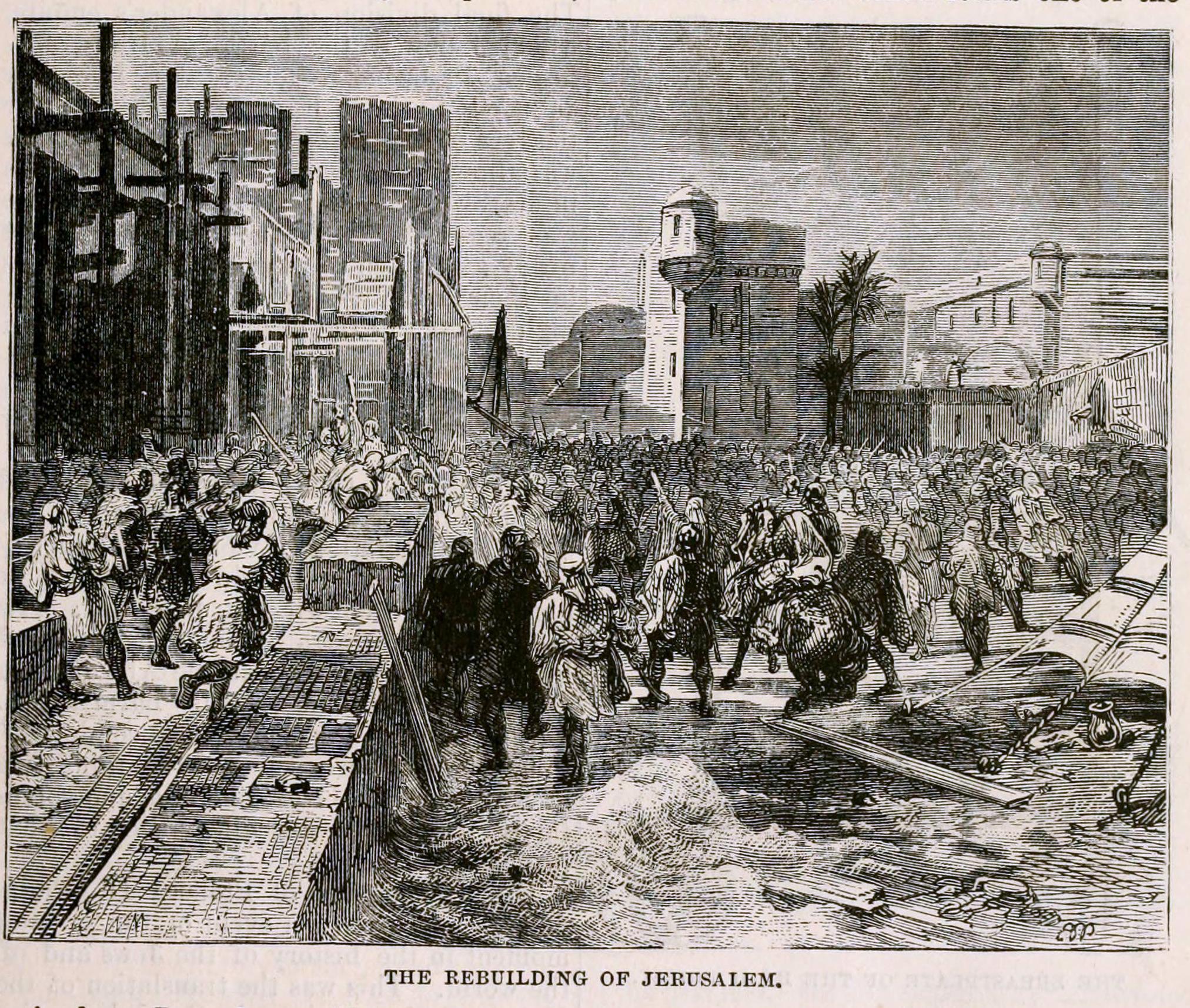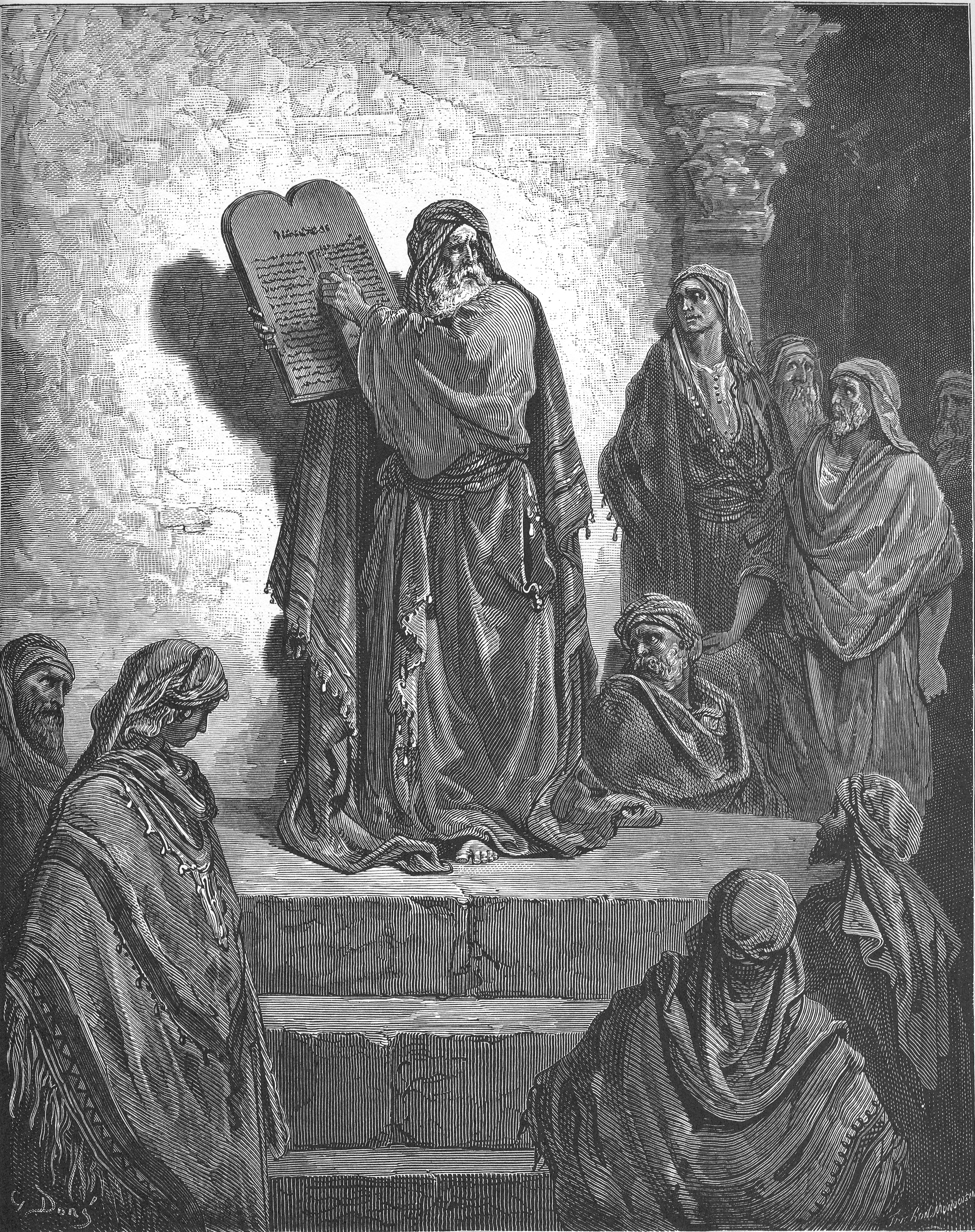|
Shivat Tzion
The return to Zion ( he, שִׁיבָת צִיּוֹן or שבי ציון, , ) is an event recorded in Ezra–Nehemiah of the Hebrew Bible, in which the Jews of the Kingdom of Judah—subjugated by the Neo-Babylonian Empire—were freed from the Babylonian captivity following the Persian conquest of Babylon. After their release, the Persian king Cyrus the Great issued a proclamation known as the Edict of Cyrus that enabled the freed Jewish populace, exiled from Judah, to return to Jerusalem and the Land of Judah, which had begun to function as a self-governing Jewish province under the Achaemenid Persian Empire. Babylonian exile The Neo-Babylonian Empire under the rule of Nebuchadnezzar II occupied the Kingdom of Judah between 597–586 BCE. The Babylonian army had destroyed the First Temple in Jerusalem. According to the Hebrew Bible, the king of Judah, Zedekiah, was forced to watch his own two sons being slaughtered, and thereafter, his own eyes were put out and he was exile ... [...More Info...] [...Related Items...] OR: [Wikipedia] [Google] [Baidu] |
Zion
Zion ( he, צִיּוֹן ''Ṣīyyōn'', LXX , also variously transliterated ''Sion'', ''Tzion'', ''Tsion'', ''Tsiyyon'') is a placename in the Hebrew Bible used as a synonym for Jerusalem as well as for the Land of Israel as a whole (see Names of Jerusalem). The name is found in 2 Samuel (5:7), one of the books of the Hebrew Bible dated to before or close to the mid-6th century BCE. It originally referred to a specific hill in Jerusalem ( Mount Zion), located to the south of Mount Moriah (the Temple Mount). According to the narrative of 2 Samuel 5, Mount Zion held the Jebusite fortress of the same name that was conquered by David and was renamed the City of David. That specific hill ("mount") is one of the many squat hills that form Jerusalem, which also includes Mount Moriah (the Temple Mount), the Mount of Olives, etc. Over many centuries, until as recently as the Ottoman era, the city walls of Jerusalem were rebuilt many times in new locations, so that the particular hill ... [...More Info...] [...Related Items...] OR: [Wikipedia] [Google] [Baidu] |
Babylon
''Bābili(m)'' * sux, 𒆍𒀭𒊏𒆠 * arc, 𐡁𐡁𐡋 ''Bāḇel'' * syc, ܒܒܠ ''Bāḇel'' * grc-gre, Βαβυλών ''Babylṓn'' * he, בָּבֶל ''Bāvel'' * peo, 𐎲𐎠𐎲𐎡𐎽𐎢 ''Bābiru'' * elx, 𒀸𒁀𒉿𒇷 ''Babili'' *Kassite: ''Karanduniash'', ''Karduniash'' , image = Street in Babylon.jpg , image_size=250px , alt = A partial view of the ruins of Babylon , caption = A partial view of the ruins of Babylon , map_type = Near East#West Asia#Iraq , relief = yes , map_alt = Babylon lies in the center of Iraq , coordinates = , location = Hillah, Babil Governorate, Iraq , region = Mesopotamia , type = Settlement , part_of = Babylonia , length = , width = , area = , height = , builder = , material = , built = , abandoned = , epochs = , cultures = Sumerian, Akkadian, Amorite, Kassite, Assyrian, Chaldean, Achaemenid, Hellenistic, Parthian, Sasanian, Muslim , dependency_of = , occupants = , event = , excavations = , archaeologists = Hormuzd Rassam, Robe ... [...More Info...] [...Related Items...] OR: [Wikipedia] [Google] [Baidu] |
Elul
Elul ( he, אֱלוּל, Standard ''ʾElūl'', Tiberian ''ʾĔlūl'') is the twelfth month of the Jewish civil year and the sixth month of the ecclesiastical year on the Hebrew calendar. It is a month of 29 days. Elul usually occurs in August–September on the Gregorian calendar. Etymology The name of the month Elul, like the names of the rest of the Hebrew calendar months, was brought from the Babylonian captivity, and originated from the Akkadian word for "harvest". A similar month name was also used in Akkadian, in the form ''Elūlu''. The month is known as Araḫ Ulūlu, "harvest month", in the Babylonian calendar. Eylül is also the name for September in Turkish; this is derived from ar, أيلول ''ʾAylūl'', used in Iraq and the Levant (see Arabic names of calendar months), from Classical Syriac ܐܝܼܠܘܼܠ ''ʾĪlūl'', also tracing its origin from the Akkadian word Elūlu. In Hebrew, a popular bacronym for Elul is from a verse in the Song of Songs "Ani LeDodi ... [...More Info...] [...Related Items...] OR: [Wikipedia] [Google] [Baidu] |
Baruch Ben Neriah
Baruch ben Neriah ( he, בָּרוּךְ בֶּן־נֵרִיָּה ''Bārūḵ ben Nērīyyā''; c. 6th century BC) was the scribe, disciple, secretary, and devoted friend of the Biblical prophet Jeremiah. He is traditionally credited with authoring the Book of Baruch. Biography According to Josephus, Baruch was a Jewish aristocrat, a son of Neriah and brother of Seraiah ben Neriah, chamberlain of King Zedekiah of Judah. Baruch became the scribe of the prophet Jeremiah and wrote down the first and second editions of his prophecies as they were dictated to him. Baruch remained true to the teachings and ideals of the great prophet, although like his master he was at times almost overwhelmed with despondency. While Jeremiah was in hiding to avoid the wrath of King Jehoakim, he commanded Baruch to read his prophecies of warning to the people gathered in the Temple in Jerusalem on a day of fasting. The task was both difficult and dangerous, but Baruch performed it without flinchi ... [...More Info...] [...Related Items...] OR: [Wikipedia] [Google] [Baidu] |
Talmud
The Talmud (; he, , Talmūḏ) is the central text of Rabbinic Judaism and the primary source of Jewish religious law (''halakha'') and Jewish theology. Until the advent of modernity, in nearly all Jewish communities, the Talmud was the centerpiece of Jewish cultural life and was foundational to "all Jewish thought and aspirations", serving also as "the guide for the daily life" of Jews. The term ''Talmud'' normally refers to the collection of writings named specifically the Babylonian Talmud (), although there is also an earlier collection known as the Jerusalem Talmud (). It may also traditionally be called (), a Hebrew abbreviation of , or the "six orders" of the Mishnah. The Talmud has two components: the Mishnah (, 200 CE), a written compendium of the Oral Torah; and the Gemara (, 500 CE), an elucidation of the Mishnah and related Tannaitic writings that often ventures onto other subjects and expounds broadly on the Hebrew Bible. The term "Talmud" may refer to eith ... [...More Info...] [...Related Items...] OR: [Wikipedia] [Google] [Baidu] |
Nethinim
Nethinim ( ''nəṯīnīm'', lit. "given ones", or "subjects"), or Nathinites or Nathineans, was the name given to the Temple assistants in ancient Jerusalem. The term was applied originally in the Book of Joshua (where it is found in its verbal form) to the Gibeonites. Later, in the Book of Ezra, they are counted alongside the ''Avdei Shlomo'' ("Servants of Solomon"). It is likely that the Nethinim descended from non-Israelites. Opinion is divided as to whether the Gibeonites in Joshua are to be connected to the Nethinim of later texts. Etymology ''Netinim'' is derived from the Canaanite verb ''N-T-N'', 'to give.' The noun form occurs 18 times in the Masoretic Text of the Hebrew Bible, always in the plural ( 1 Chr. 9:2; Ezra 2:43,58,70; 7:7,24; 8:17,20; Neh. 3:26,31; 7:46,60,73; 10:28; 11:3,21). Translations and spellings In English, ''Nethinim'' is one of several Hebrew words which are transliterated rather than translated in the King James Version (1611). It is also the mo ... [...More Info...] [...Related Items...] OR: [Wikipedia] [Google] [Baidu] |
Levites
Levites (or Levi) (, he, ''Lǝvīyyīm'') are Jewish males who claim patrilineal descent from the Tribe of Levi. The Tribe of Levi descended from Levi, the third son of Jacob and Leah. The surname ''Halevi'', which consists of the Hebrew definite article "" ''Ha-'' ("the") plus ''Levi'' (Levite) is not conclusive regarding being a Levite; a titular use of HaLevi indicates being a Levite. The daughter of a Levite is a " ''Bat Levi''" (''Bat'' being Hebrew for "daughter"). The Tribe of Levi served particular religious duties for the Israelites and had political (administering cities of refuge) and educational responsibilities as well. In return, the landed tribes were expected to support the Levites with a tithe (), particularly the tithe known as the First tithe, ''ma'aser rishon''. The Kohanim, a subset of the Levites, were the priests, who performed the work of holiness in the Temple. The Levites, referring to those who were not Kohanim, were specifically assigned to * singi ... [...More Info...] [...Related Items...] OR: [Wikipedia] [Google] [Baidu] |
Kohen
Kohen ( he, , ''kōhēn'', , "priest", pl. , ''kōhănīm'', , "priests") is the Hebrew word for "priest", used in reference to the Aaronic priesthood, also called Aaronites or Aaronides. Levitical priests or ''kohanim'' are traditionally believed and halakhically required to be of direct patrilineal descent from the biblical Aaron (also ''Aharon''), brother of Moses. During the existence of the Temple in Jerusalem, ''kohanim'' performed the daily and holiday (Yom Tov) duties of korban, sacrificial offerings. Today, ''kohanim'' retain a lesser though distinct status within Rabbinic and Karaite Judaism and are bound by additional restrictions according to Orthodox Judaism. In the Samaritan community, the kohanim have remained the primary religious leaders. Ethiopian Jewish religious leaders are sometimes called ''kahen'', a form of the same word, but the position is not hereditary and their duties are more like those of rabbis than kohanim in most Jewish communities. E ... [...More Info...] [...Related Items...] OR: [Wikipedia] [Google] [Baidu] |
Book Of Ezra
The Book of Ezra is a book of the Hebrew Bible; which formerly included the Book of Nehemiah in a single book, commonly distinguished in scholarship as Ezra–Nehemiah. The two became separated with the first printed rabbinic bibles of the early 16th century, following late medieval Latin Christian tradition. Composed in Hebrew and Aramaic, its subject is the Return to Zion following the close of the Babylonian captivity, and it is divided into two parts, the first telling the story of the first return of exiles in the first year of Cyrus the Great (538 BC) and the completion and dedication of the new Temple in Jerusalem in the sixth year of Darius I (515 BC), the second telling of the subsequent mission of Ezra to Jerusalem and his struggle to purify the Jews from marriage with non-Jews. Together with the Book of Nehemiah, it represents the final chapter in the historical narrative of the Hebrew Bible. Ezra is written to fit a schematic pattern in which the God of Is ... [...More Info...] [...Related Items...] OR: [Wikipedia] [Google] [Baidu] |
Nehemiah
Nehemiah is the central figure of the Book of Nehemiah, which describes his work in rebuilding Jerusalem during the Second Temple period. He was governor of Persian Judea under Artaxerxes I of Persia (465–424 BC). The name is pronounced or in English. It is in Hebrew , ''Nəḥemyāh'', " Yah comforts". Most scholars believe Nehemiah was a real historical figure and that the Nehemiah Memoir, a name given by scholars to certain portions of the book written in the first person, is historically reliable.For confirmation that many scholars share this view, see For confirmation that most scholars share this view, see For an author who disagrees with the scholarly majority position on the historicity of Nehemiah and Ezra, but acknowledges the existence of that majority, see Book of Nehemiah narrative In the 20th year of Artaxerxes I (445 or 444 BC), Nehemiah was cup-bearer to the king. Learning that the remnant of Jews in Judah were in distress and that the walls of Jerus ... [...More Info...] [...Related Items...] OR: [Wikipedia] [Google] [Baidu] |
Ezra
Ezra (; he, עֶזְרָא, '; fl. 480–440 BCE), also called Ezra the Scribe (, ') and Ezra the Priest in the Book of Ezra, was a Jewish scribe (''sofer'') and priest (''kohen''). In Greco-Latin Ezra is called Esdras ( grc-gre, Ἔσδρας). According to the Hebrew Bible he was a descendant of Sraya, the last High Priest to serve in the First Temple, and a close relative of Joshua, the first High Priest of the Second Temple. He returned from Babylonian exile and reintroduced the Torah in Jerusalem. According to 1 Esdras, a Greek translation of the Book of Ezra still in use in Eastern Orthodoxy, he was also a High Priest. Rabbinic tradition holds that he was an ordinary member of the priesthood. Several traditions have developed over his place of burial. One tradition says that he is buried in al-Uzayr near Basra (Iraq), while another tradition alleges that he is buried in Tadif near Aleppo, in northern Syria. His name may be an abbreviation of ', " Yah helps". In the ... [...More Info...] [...Related Items...] OR: [Wikipedia] [Google] [Baidu] |
Zerubbabel
According to the biblical narrative, Zerubbabel, ; la, Zorobabel; Akkadian: 𒆰𒆍𒀭𒊏𒆠 ''Zērubābili'' was a governor of the Achaemenid Empire's province Yehud Medinata and the grandson of Jeconiah, penultimate king of Judah. Zerubbabel led the first group of Jews, numbering 42,360, who returned from the Babylonian captivity in the first year of Cyrus the Great, the king of the Achaemenid Empire.' The date is generally thought to have been between 538 and 520 BC. Zerubbabel also laid the foundation of the Second Temple in Jerusalem soon after. In all of the accounts in the Hebrew Bible that mention Zerubbabel, he is always associated with the high priest who returned with him, Joshua (Jeshua) son of Jozadak (Jehozadak). Together, these two men led the first wave of Jewish returnees from exile and began to rebuild the Temple. Old Testament theologian John Kessler describes the region of Judah as a small province that contained land extending 25 km from Jerusalem a ... [...More Info...] [...Related Items...] OR: [Wikipedia] [Google] [Baidu] |









